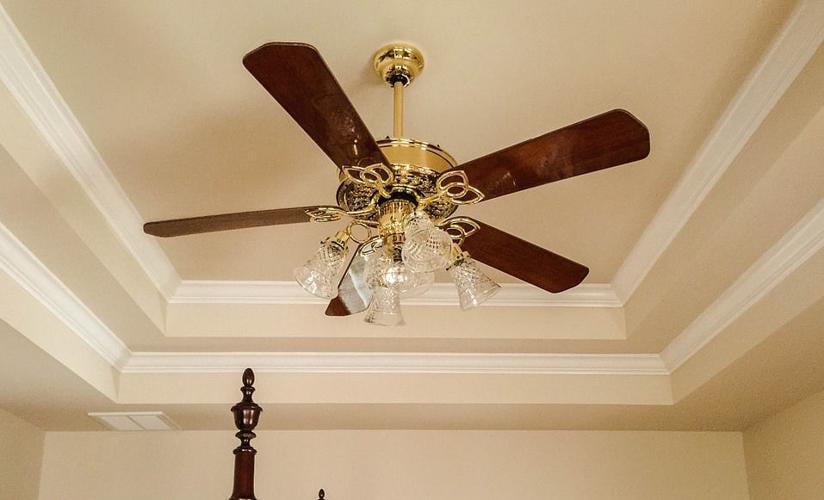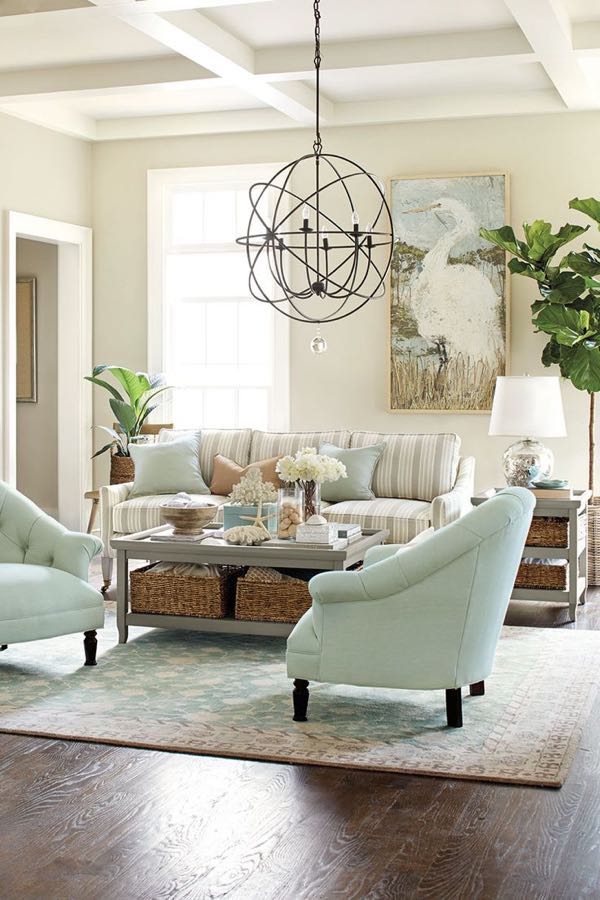Are you considering adding a touch of elegance to your living space but unsure about the best ceiling design to enhance your home’s aesthetic? Choosing between a coffered ceiling and a tray ceiling can be a game-changer for your interior design.
Each style offers unique benefits, transforming your room from ordinary to extraordinary. But how do you decide which is right for you? We’ll explore the differences between coffered and tray ceilings, helping you make an informed choice that aligns perfectly with your style and functionality needs.
Stick around to discover which ceiling design could be the perfect fit for your home, and let your ceiling become the focal point of your decor.
Coffered Ceiling Design
The coffered ceiling design offers a touch of elegance and depth to any space. This architectural feature showcases a series of sunken panels, adding texture and visual interest. Coffered ceilings are versatile, fitting well with various styles from traditional to modern.
Historical Origins
Coffered ceilings date back to ancient Greece and Rome. They were used in grand temples and palaces. The design was a sign of wealth and status. Over time, they became popular in Renaissance architecture. Many historic buildings feature this intricate ceiling style.
Materials Used
Wood is a common material for coffered ceilings. It offers warmth and charm. Plaster is another option, providing a smooth finish. Modern designs may use MDF or drywall for cost-effectiveness. Materials are chosen based on the desired look and budget.
Installation Process
Installing a coffered ceiling begins with planning the layout. Precise measurements are crucial. The next step involves framing the ceiling with beams. Panels are then added within the frames. Finally, finishes like paint or stain complete the look.
Cost Implications
Coffered ceilings can be expensive due to materials and labor. Wood and plaster increase costs. MDF or drywall options are more affordable. Custom designs add to the price. Consider the complexity of the design for budgeting.

Credit: www.finehomesandliving.com
Tray Ceiling Design
Tray ceilings add elegance to any room. Their raised center creates depth and charm. They work well in dining rooms, bedrooms, and living spaces. Tray ceilings can make a room appear taller and more spacious. This design offers a touch of sophistication without overwhelming the space.
Aesthetic Features
Tray ceilings have a sunken center, surrounded by a dropped border. This creates a layered look. The design can be simple or ornate. Adding crown molding enhances its appeal. The ceiling can be painted in contrasting colors. Light fixtures or hidden LED lights add drama. The design is versatile and suits various styles.
Common Materials
Drywall is the most common material for tray ceilings. It’s affordable and easy to work with. Wood adds a warm, rustic feel. It suits traditional or country-style homes. Plaster offers a smooth, elegant finish. It’s ideal for detailed designs. Metal tiles provide a modern touch. They work well in contemporary spaces.
Installation Techniques
Installing a tray ceiling requires precision. First, outline the design on the existing ceiling. Use a laser level for accuracy. Build the frame using wooden beams. Secure the frame to ceiling joists. Attach drywall or chosen materials to the frame. Finish with paint, molding, or lighting.
Budget Considerations
Tray ceiling costs vary by design and materials. Basic designs are affordable. Adding moldings or lights increases cost. Material choice impacts the budget. Drywall is cheaper than wood or metal. DIY can save money. Hiring professionals ensures quality but costs more.
Visual Impact
The ceiling design can transform the look of a room. Coffered and tray ceilings offer distinct visual impacts. Each style creates a unique atmosphere. Choosing between them depends on several factors.
Room Size And Ceiling Height
Coffered ceilings work well in large spaces. They add depth and elegance. Smaller rooms can feel crowded with coffered designs. Tray ceilings suit rooms of any size. They provide a subtle lift without overwhelming. The height of the ceiling matters too. Coffered ceilings are best for tall ceilings. They draw the eye upward. Tray ceilings can make low ceilings feel higher.
Lighting And Shadow Effects
Coffered ceilings create interesting shadows. Each panel has its own lighting effect. This adds texture and drama to the room. Tray ceilings offer a different effect. They often include indirect lighting. This can create a soft glow around the perimeter. Shadows are less pronounced with tray ceilings. Both styles affect lighting in unique ways.
Functional Benefits
Coffered ceilings add elegance and can help reduce noise in a room. Tray ceilings create a sense of spaciousness while providing a focal point. Both ceiling types offer unique design elements that enhance the aesthetic and functional appeal of a space.
When considering ceiling designs, coffered and tray ceilings both offer functional benefits that go beyond aesthetics. While these styles enhance the visual appeal of a room, they also provide practical advantages that you might not have considered. Let’s dive into some of these benefits and see how they can add value to your living space.Acoustic Properties
Coffered ceilings can greatly improve the acoustics in a room. The recessed panels work to break up sound waves, reducing echo and noise levels. This makes coffered ceilings ideal for spaces like home theaters or music rooms where sound quality is crucial. Tray ceilings, while not as effective as coffered designs, still offer some acoustic benefits. The raised center can help to slightly dampen noise, making it a better option than flat ceilings. If you’re looking to balance aesthetics with sound control, tray ceilings might be your go-to choice.Insulation Advantages
Ceilings can also play a role in your home’s insulation. Coffered ceilings have the added benefit of creating air pockets, which can help maintain a room’s temperature. This can be particularly useful in keeping your home warm during colder months. Tray ceilings, though not as robust as coffered in terms of insulation, still offer some advantage. The design can help to trap heat in the elevated center, providing a minor boost in energy efficiency. Have you considered how this might impact your utility bills? Both coffered and tray ceilings offer functional benefits that go beyond mere decoration. Whether you’re focused on sound control or energy efficiency, these ceiling styles can make a noticeable difference in your home. Have you ever thought about how a ceiling design could enhance your day-to-day life?Design Flexibility
Coffered ceilings offer intricate, customizable designs with deep recesses, while tray ceilings provide a simpler, elegant look with layered elevation. Both styles enhance architectural interest, allowing for creative lighting and decorative options to suit diverse tastes and spaces.
When choosing between a coffered ceiling and a tray ceiling, design flexibility is a crucial factor to consider. Both ceiling types offer unique opportunities to customize and adapt to various architectural styles. Understanding the differences in their design flexibility can help you make an informed decision for your space.Customization Options
Coffered ceilings provide an extensive range of customization options. You can experiment with different patterns, such as square, rectangular, or even hexagonal coffers. Adding molding or trimming can further enhance the look, allowing you to create a truly personalized design. Tray ceilings, on the other hand, offer a simpler yet elegant approach. You can customize the depth and layering of the tray, as well as add lighting features to accentuate its form. Imagine setting a warm ambiance with recessed lights in a tray ceiling during a cozy dinner party. Which appeals more to your creative side—intricate patterns or sleek simplicity?Compatibility With Architectural Styles
Coffered ceilings have a classic charm that suits traditional and transitional architectural styles beautifully. Think of the grandeur they can bring to a Victorian-style living room or a stately library. Their structured design complements spaces that aim for a sophisticated and timeless look. Tray ceilings, with their clean lines, are highly versatile and compatible with contemporary and modern styles. They can also blend seamlessly with minimalist or industrial designs. Picture a sleek tray ceiling enhancing the open concept of a modern loft, adding depth without overwhelming the space. Does your home lean towards classic elegance or modern simplicity? This can guide your choice between these ceiling types. Design flexibility in ceilings can transform a room from ordinary to extraordinary. Whether you favor the detailed artistry of coffered ceilings or the refined elegance of tray ceilings, there’s a design to reflect your taste and complement your home’s architecture. What ceiling style will you choose to elevate your space?
Credit: hilltopcustom.com
Maintenance And Durability
Choosing the right ceiling style impacts maintenance and durability. Coffered and tray ceilings both offer unique aesthetics. Knowing their care needs helps in making an informed choice.
Cleaning And Care Tips
Coffered ceilings need regular dusting. Use a soft cloth to prevent scratches. Pay attention to corners where dust gathers. For tray ceilings, a simple wipe with a damp cloth usually suffices. Avoid harsh cleaners that can damage finishes.
Long-term Durability
Coffered ceilings boast strong durability due to their structural design. They can last decades with proper care. Tray ceilings are simpler but equally robust. Their longevity depends on installation quality and environmental factors.
Personal Preferences
When deciding between a coffered ceiling and a tray ceiling, personal preferences play a significant role. Your unique style, lifestyle, and the ambiance you wish to create in your home are key factors. Let’s explore how your choices might lean one way or another.
Choosing Based On Style
Style is a matter of personal taste. A coffered ceiling often brings an element of grandeur and tradition, reminiscent of classic architectural designs. If you appreciate intricate details and a touch of elegance, this might be your go-to choice.
On the other hand, tray ceilings offer a sleek and modern look. They can add depth without overwhelming the space. If you prefer minimalism or contemporary aesthetics, a tray ceiling may align more with your vision.
Think about the overall theme of your home. If your decor leans towards vintage or classic, a coffered ceiling could enhance that vibe. Conversely, for a more modern or eclectic space, a tray ceiling might be the perfect fit.
Lifestyle Considerations
Your lifestyle can influence your ceiling choice as well. Coffered ceilings, with their complex designs, might require more upkeep. Dusting and maintenance could become part of your routine if you choose this option.
Tray ceilings, being simpler, often need less attention. If you have a busy lifestyle or prefer low-maintenance options, this could be a deciding factor. Consider how much time and effort you’re willing to dedicate to upkeep.
Also, think about how you use your spaces. If you entertain often, a coffered ceiling can become a conversation starter and add to the room’s ambiance. But if you prefer a cozy and intimate setting, a tray ceiling’s subtlety might suit you better.
Ultimately, the decision between a coffered and tray ceiling hinges on what resonates with you. What does your home say about you? How do you want to feel when you walk into the room? Answering these questions can guide you towards the ceiling that best suits your personal preferences.

Credit: www.lynn-byrne.com
Frequently Asked Questions
What Is A Coffered Ceiling?
A coffered ceiling features a grid pattern with recessed panels. Adds depth. Often used in formal settings.
What Is A Tray Ceiling?
A tray ceiling has a raised central section. Creates an illusion of height. Common in dining rooms.
Which Ceiling Type Adds More Elegance?
Coffered ceilings are often seen as more elegant. Their intricate design suits luxurious spaces.
Are Tray Ceilings Expensive To Install?
Tray ceilings are generally less expensive. Simpler design. Fewer materials needed compared to coffered ceilings.
Do Coffered Ceilings Reduce Noise?
Yes, coffered ceilings can help with sound reduction. Their panels absorb sound. Makes rooms quieter.
Conclusion
Choosing the right ceiling style matters. Both coffered and tray ceilings offer charm. Coffered ceilings add depth and elegance. Tray ceilings provide a modern touch and visual interest. Consider your room’s size and style. Coffered ceilings suit traditional spaces. Tray ceilings fit contemporary designs.
Think about your budget and installation ease. Decide what matches your taste and home. Each style has unique features. Make your choice wisely. Your ceiling choice can transform your room’s look. Enhance your space with the right design. Achieve the perfect balance between aesthetics and function.





